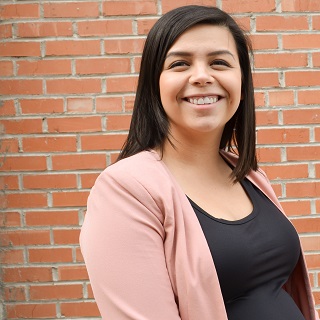I grew up in the rural part of the Magic Valley as an academically high-achieving, first-generation Mexican-American student. In high school I took a full range of dual-credit courses, had a 4.0 grade point average, and served on student council, National Honor Society, Key Club, and as editor of our school yearbook.

Given my accomplishments, you might assume that as an adolescent I had frequent conversations with my teachers and principals about opportunities I could and should pursue. But that wasn’t the case. Instead, I was discouraged in school from thinking of myself as “college material.” I can’t count the number of times teachers in dual-credit courses sent me a clear message that I did not belong in educational environments, and that I was not worthy of “going on.”
That’s why the story of the Middleton teachers who dressed as the border wall and stereotypes of Mexicans knotted my stomach: because it reminded me of how biases against and beliefs about students of Mexican descent affected my own life. It is impossible for me to see the teachers’ actions as simply thoughtless or harmless.
Those costumes displayed what I call covert racism, in contrast to the overt racism from which most of us recoil. But it’s at least as damaging.
From elementary school through high school, not once did a teacher, counselor, or administrator tell me college was a viable option for my future.
In fact, I consistently had to fight stereotypes, assumptions, and biases (implicit and explicit) from educators. The message sent to me by the dominant U.S. culture was that educational institutions were not created for people like me. To even have been attending school was a defiance of these stereotypes and assumptions.
Children can be impressionable, and tend to internalize opinions expressed by authority figures, including teachers. I was no exception. I worked hard to persevere despite the criticisms and messages I was receiving. I worked tirelessly not to internalize these messages, to defy them by believing in myself.
But I am only human. Their lack of confidence in my abilities cut deep and left scars. Confronting doubts from others is one thing, but to face uncertainty from and about yourself is an incredibly isolating feeling.
That’s why the Middleton incident is so damaging. When a student of Mexican descent sees those teachers in costumes promoting the degradation of the Mexican culture they receive the message that they are not welcomed. What they internalize is “get out of our classrooms and out of our country.”
When the superintendent reinstated the teachers, he said “there is nothing more than love and commitment in the hearts of these teachers.” I am sure those teachers do not hate their Latino students, and on some level may well even love them. But they need to look deep inside at their unexamined biases and how those biases play out in their relationships with students of color.
I see this incident as a call to action for educators to become more thoughtful, culturally competent practitioners. It’s about doing the heavy work of analyzing our own biases, recognizing how they shape our belief systems; how they show up in our actions and in how we treat students.
Are Idaho teachers competently navigating those biases to create safe, inclusive spaces where our students feel secure to learn? Unfortunately, this incident answers that question with a resounding ‘no.’
Idaho struggles with its dropout and go-on rates. As our state’s Latino population continues to grow, these challenges will become more severe if we do not address the messages being sent to these students that going on is not a real option for them.
So please, do not tell me that what those Middleton educators did was ultimately harmless.
Still, it may end up having a positive result, if it opens people’s eyes to the struggles for respect and a sense of belonging of students who look like me go through in schools every day across this state and this nation. A resource that has been helpful to me as an educator and used in my work with teachers is Teaching Tolerance, which provides resources to help teachers and schools educate children and youth to be active participants in a diverse democracy.
Written by Tracy Sedano, a teacher coach for Teach for America-Idaho.
